Recent Articles
Popular Makes
Body Types
2017 Ford Fusion Road Test and Review
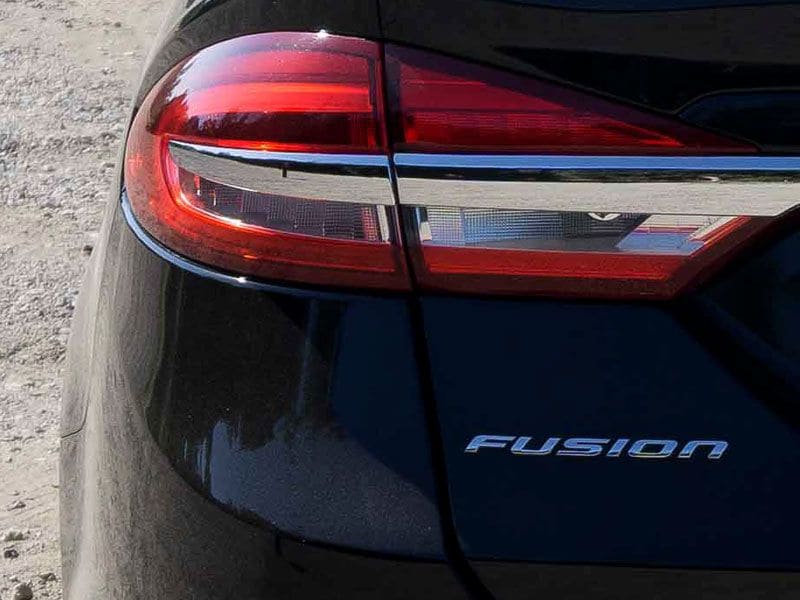
2017 Ford Fusion JF badge ・ Photo by Jason Fogelson
Ford’s marketing gurus claim that midsize sedans represent the number one entry point into their brand, which puts a lot of pressure on the newly refined 2017 Ford Fusion lineup. For the past 10 years, Fusion has been one of the top 10 selling new cars in the US, with over 300,000 sales per year for 2014 and 2015. Ford’s not taking any chances with Fusion, but they’re not standing still, either. They’ve developed a broad range of Fusion trim levels, features and options, designed to move up that top 10 list and to challenge the midsize sedan leaders, Honda Accord and Toyota Camry.
Pricing and Trim Levels
There are 12 trim levels of Fusion coming for 2017, all the way from a gasoline-only base S model (starting at $22,120) to the full-zoot plug-in hybrid electric vehicle (PHEV) Energi Platinum (starting at $41,120). The least-expensive gasoline-electric hybrid model, the Hybrid S, starts at $25,185, and the most affordable PHEV is the Energi SE, which starts at $31,120. Later this year, there will even be a V6-powered all-wheel-drive model, the Sport (starting at $33,475). Very well-equipped Platinum and Titanium models are also in the lineup. Fun fact: There will be more 2017 Ford Fusion trim levels than Mitsubishi car models this year – and Fusion is likely to sell in bigger numbers than the whole Mitsubishi US lineup.
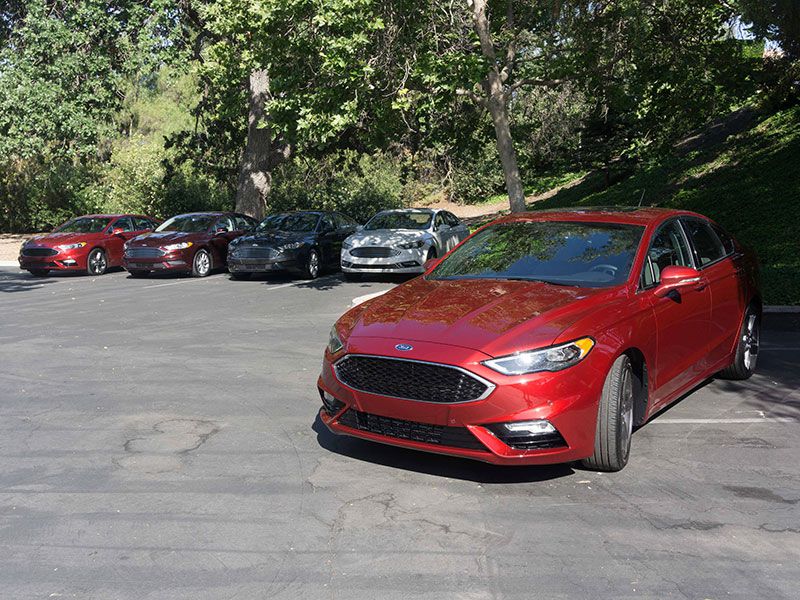
Exterior Design
When the current Fusion design debuted as a 2012 model, you couldn’t miss the way the grille shape and the creased hood lines on the Fusion echoed the current Aston Martin DB9 – high praise, indeed. The rest of the vehicle is also sleekly styled, with big wheel arches and a sloping roofline. Nearly every trim level wears a unique grille insert. LED headlamps are standard on the Titanium, Platinum and Sport trims, and available on SE. Wheel sizes start at 16 inches on S and go all the way to 19 inches on Sport. Designers struggle to make their midsize sedans stand out. The folks at Ford have done a good job of giving Fusion its own classy look.
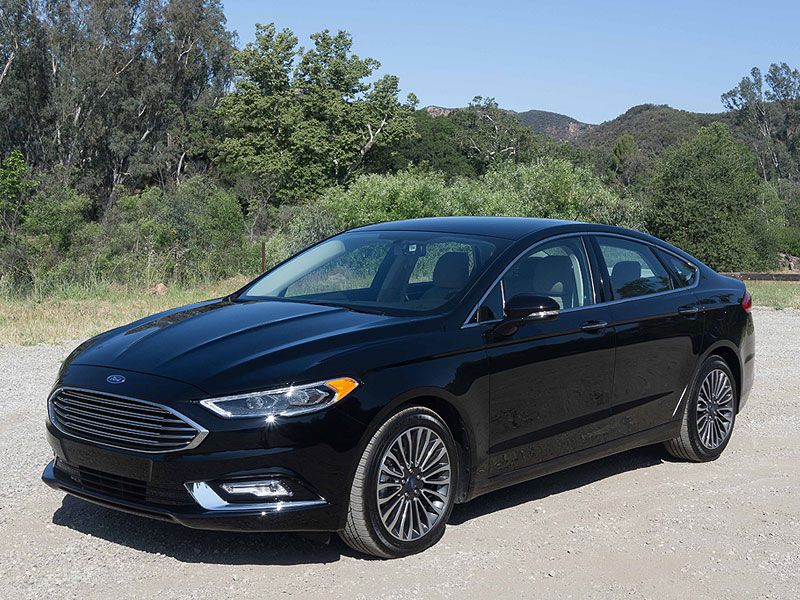
Photo by Jason Fogelson
Comfort and Convenience
Fusion gets new interior colors, upgraded materials and options for this year, and some functional changes. Keyless entry and push-button start are standard across the model range, with 4-door passive entry on some models. The cabin is roomy and comfortable, with ample leg and head room in the second row for adults. Gas-only models can swallow 16 cubic feet of luggage in the trunk, while the rear-mounted batteries leave just 12 cubic feet in the Hybrid and 8.3 cubic feet in the Energi. Ford has added a full perimeter hood seal, an acoustic windshield and acoustic side glass to the first row to quiet the ride. Active noise cancellation adds additional sound deadening to the Sport and Plug-In models.
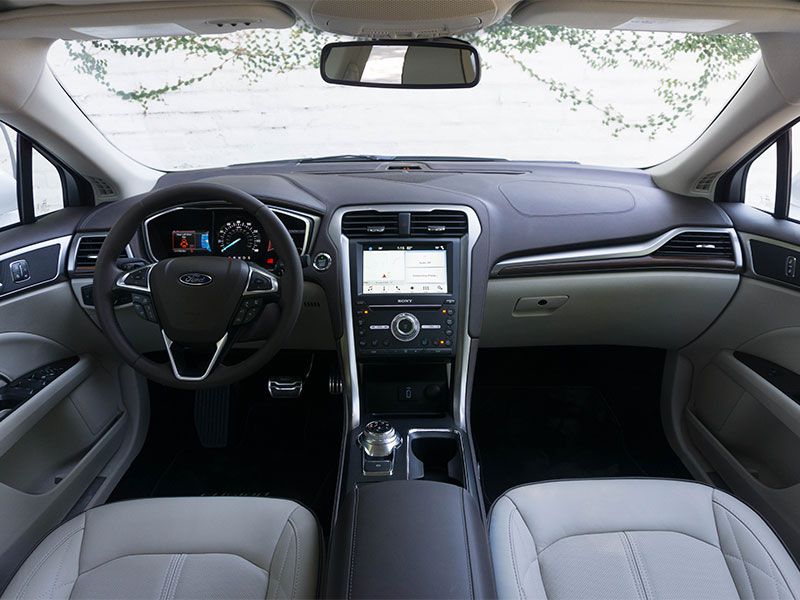
Photo by Jason Fogelson
Features and Controls
In the center stack, you’ll find Ford’s newest SYNC 3 infotainment system with integrated Apple Car Play and Android Auto and an 8-inch capacitive color touchscreen display. The clunky MyFord Touch is a thing of the past, and the new optional SYNC Connect system works smoothly. Two USB charging ports live in the base of the center stack with a bin to hold devices. A new rotary gear selector lives in the center console, paired with an electric parking brake switch, both offering foolproof operation and a low-profile presence. Hybrid and Energi models have regenerative braking with a Brake Coach and a SmartGauge with EcoGuide to help get the most out of each gallon of gas and volt of electricity.

Photo by Jason Fogelson
Safety
There’s barely room to touch on the wide range of standard and available driver assistance technologies on Fusion. The highlights include adaptive cruise control with full stop-and-go, lane departure warning and lane keep assist, park assist for parallel and perpendicular parking, blind spot warning with cross traffic alert, pre-collision assist with pedestrian detection, and even driver attention warning. Many of these features have trickled down from premium vehicles, and can really help make driving a Fusion a much safer experience.
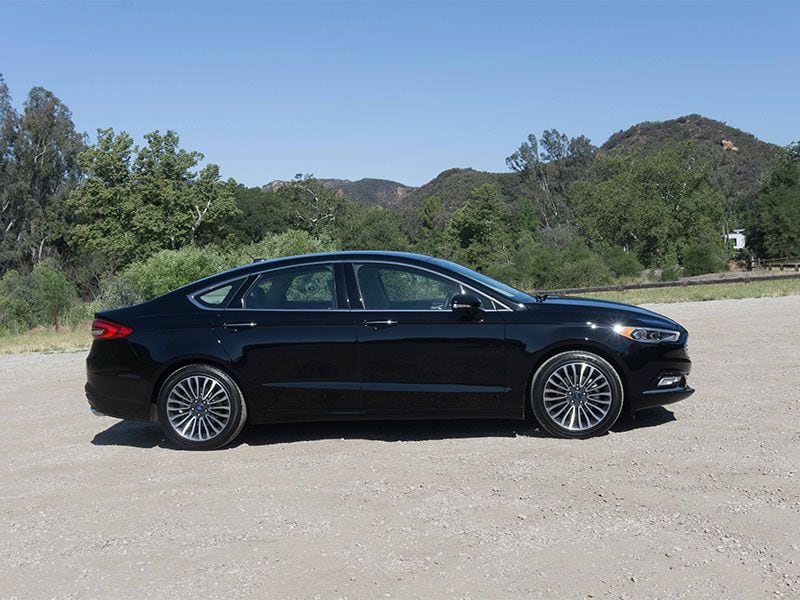
Photo by Jason Fogelson
Engines
Along with the trim levels, a dizzying array of powertrain options are available with the Fusion. The base engine is a 2.5-liter Duratec inline 4-cylinder (S, SE). A 1.5-liter turbocharged EcoBoost is the next step up (optional on SE), followed by a 2.0-liter turbocharged EcoBoost (optional on SE, standard on Titanium and Platinum). A 2.7-liter turbocharged V6 EcoBoost is standard on the Sport. Hybrid and plug-in hybrid (Energi) models get a 2.0-liter inline 4-cylinder engine and lithium-ion battery packs. The Energi can travel up to 22 miles on a fully charged battery, and recharging from “empty” takes about 6.6 hours on 110-volt current or 2.5 hours on 220-volt lines. A 110-volt charging cable is included.
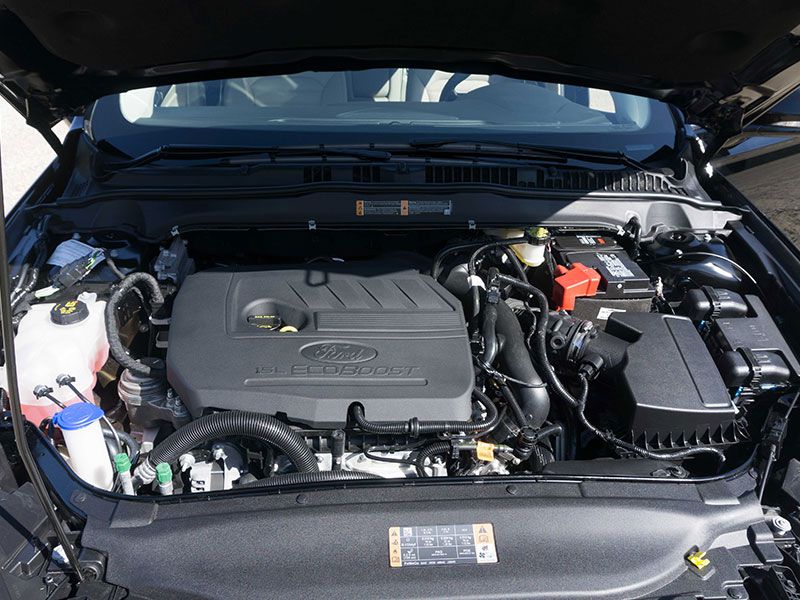
Photo by Jason Fogelson
Performance
All-wheel drive is available or standard on all models except the base S (front-wheel drive only). A 6-speed automatic transmission comes with the gasoline engines; eCVT (electronic continuously variable transmission) is fitted to the hybrids and plug-in hybrids. Fusion’s 4-wheel independent suspension system has been upgraded, with MacPherson struts in the front and ControlLink multi-link in the rear, and handling is smooth and controlled. There’s a noticeable difference in the ride between the gasoline-only and hybrid models, probably due to a shift in weight balance with the rear-mounted batteries. Be sure to drive both to see which one suits you – we preferred the gasoline-only setup. Continuously controlled damping will be standard on the Sport trim when it arrives.
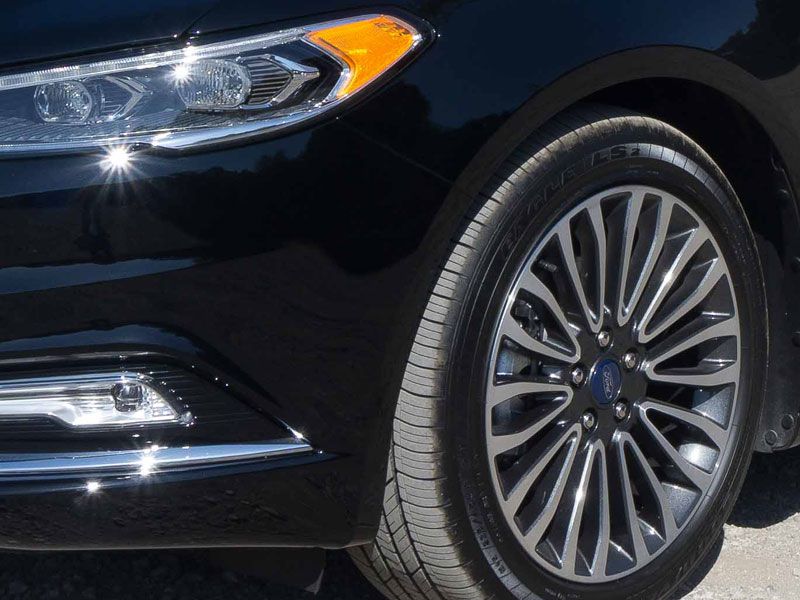
Photo by Jason Fogelson
Fuel Economy
Along with the array of engine choices, 2017 Ford Fusion has a broad swath of fuel economy ratings. The champ is the Energi trim level, which comes in with a 43 city/41 highway/42 combined mpg gasoline rating, and a 101 city/91 highway/97 combined MPGe rating, based on its 22-mile electric-only range. The Hybrid gets 43 city/41 highway/42 combined. Gasoline-only models can also achieve impressive fuel economy. The 1.5-liter EcoBoost-equipped models are rated at 23 city/34 highway/27 combined with Auto Stop-Start engaged. Step up to the 2.0-liter EcoBoost, and you can get 21 city/31 highway/25 combined with front-wheel-drive, or 20 city/29 highway/23 combined with optional all-wheel-drive. Ratings for the base 2.5-liter Duratec and 2.7-liter EcoBoost V6 have not yet been announced.

Photo by Jason Fogelson
Final Thoughts
Competition breeds great opportunities for potential buyers. Camry and Accord are formidable, but neither offers the option of all-wheel-drive or plug-in hybrid operation – yet – and neither has a turbocharged V6 option like Fusion does. Ford has made a raft of welcome improvements to the Fusion lineup, while retaining the broad appeal that has generated all of those sales over the past decade. If midsize sedans really do represent the entry point, the 2017 Ford Fusion has a lot of open doors to welcome new buyers to the Ford fold.
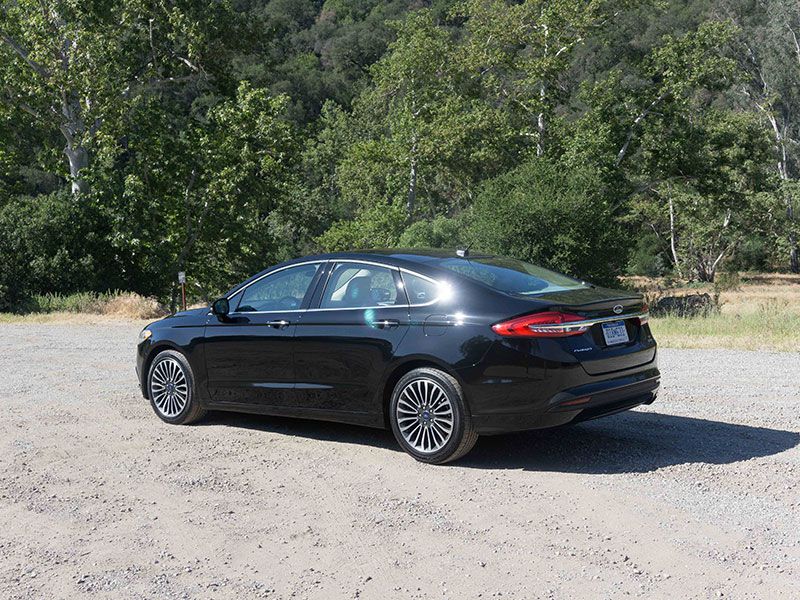
Photo by Jason Fogelson